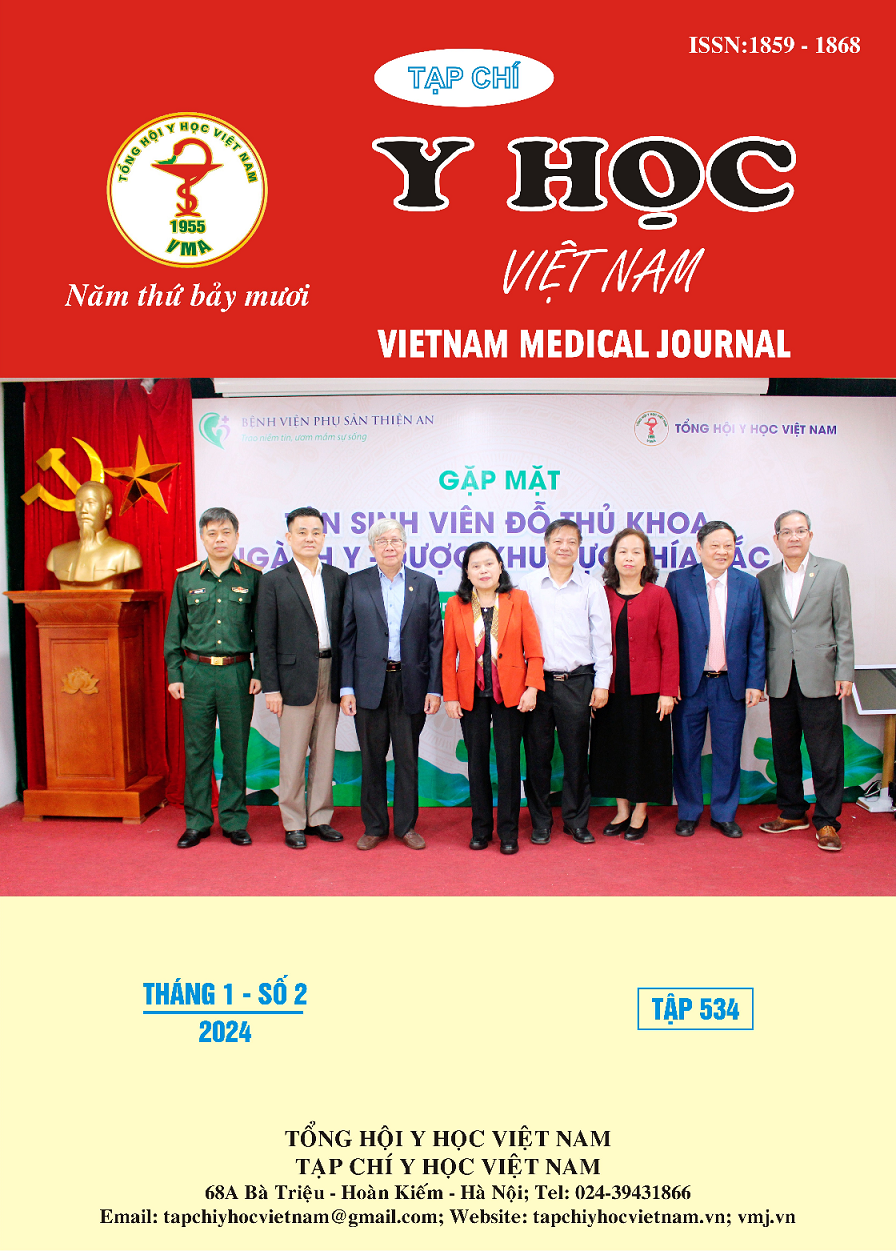ASSESSMENT THE INITIAL RESULTS OF CANALICULITIS AFTER CANALICULOTOMY WITH MINI MONOKA S1.1500 INTUBATION
Main Article Content
Abstract
Purpose: To determine results after canaliculotomy with intubation S1.1500 Mini Monoka in managing canaliculitis. Study design and Method: The study reports a case series. From 2020 to 2021, we gathered 25 eyes who met the diagnostic criteria for canaliculitis. Then, dacryoliths and pus discharge were removed for microbiological testing. An incision was made in the lacrimal canal to insert a Mini-Monoka S1.1500 stent. Finally, we removed the stents after three months and patients underwent until six months of follow-up. Results: We gathered 25 eyes of 24 patients with an average age 53,16 ± 14,53. After six months, 88% of all cases were recorded success. 4% of all were completely failed, 12% with some complications (punctum stenosis and granuloma with 4% and 8%, respectively) and no relapse. The results showed that 88% (22 samples) of microbiology samples were positive, 22,73% of those were co-infected with 2 microorganisms, and none was more than two. Among those, 7 samples were positive with Gram-positive anaerobic coccus Parvimonas micra (rate 31.82% out of 22 samples were positive for microorganisms and 28% of total samples collected); of which, 4 samples (18.18%) were co-infected with other anaerobic species (3 Gram-negative bacteria: Campylobacter rectus, Prevotella nanceiensis, Prevotella conceptionensis, and 1 Gram-positive Actinomyces turicensis). Conclusion: Primary canaliculitis is rare and easy to be misdiagnosed. Early diagnosis is very important in complete cure because the longer the disease duration is, the worse the complications and prognosis are. Treating needs canaliculus pressing combined with canaliculotomy and intubation S1.1500.
Article Details
References
2. Mehrotra, N., et al., Actinomycosis of eye: Forgotten but not uncommon. Anaerobe, 2015. 35: p. 1-2.
3. Kim, U.R., B. Wadwekar, and L. Prajna, Primary canaliculitis: The incidence, clinical features, outcome and long-term epiphora after snip–punctoplasty and curettage. Saudi Journal of Ophthalmology, 2015. 29(4): p. 274-277.
4. Pavilack, M.A. and B.R. Frueh, Thorough curettage in the treatment of chronic canaliculitis. Archives of ophthalmology, 1992. 110(2): p. 200-202.
5. Kaliki, S., et al., Primary canaliculitis: clinical features, microbiological profile, and management outcome. Ophthalmic plastic & reconstructive surgery, 2012. 28(5): p. 355-360.
6. Feroze, K.B. and B.C. Patel, Canaliculitis. 2019.
7. Yılmaz, M.B., et al., Canaliculitis awareness. Turkish journal of ophthalmology, 2016. 46(1): p. 25.
8. Zhang, Q., et al., Clinical characteristics, treatment patterns, and outcomes of primary canaliculitis among patients in Beijing, China. BioMed research international, 2015. 2015.
9. Xiang, S., et al., Clinical features and surgical outcomes of primary canaliculitis with concretions. Medicine, 2017. 96(9).
10. Alam, M.S., N.S. Poonam, and B. Mukherjee, Outcomes of canaliculotomy in recalcitrant canaliculitis. Saudi Journal of Ophthalmology, 2019. 33(1): p. 46-51.


